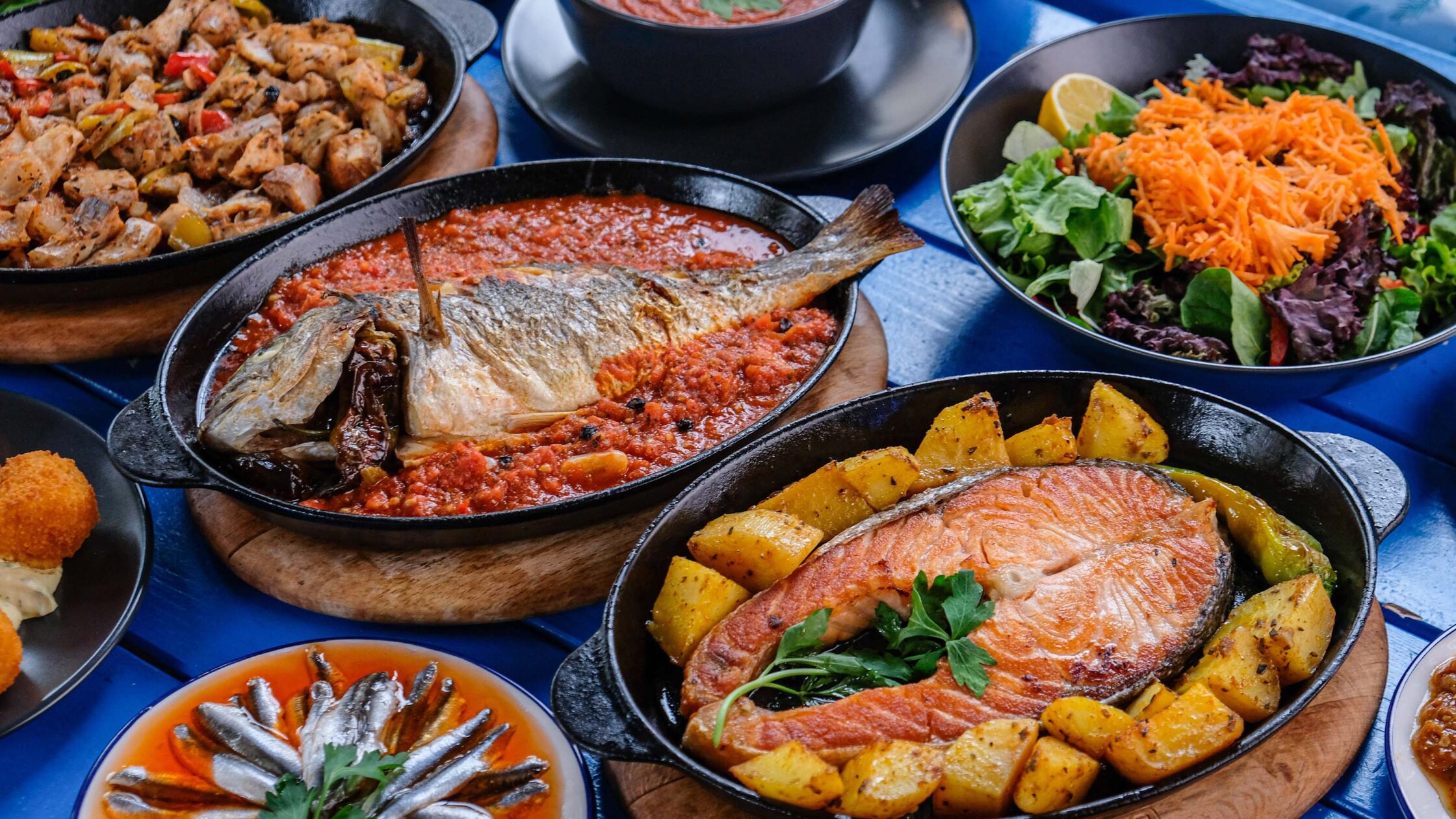Kitchen
Fish Be With You: How to Make Delicious Filipino Fish Dishes for the Family This Lent
It’s Lenten season and since many of us have sworn off eating meat, we’ve created a family-friendly guide for buying, preparing, and cooking fish.
Lent is the season when fish becomes the family’s main viand (ulam)! More often than not, this means frying a fish and pairing it with pickled vegetables or fruit and rice. But that can get tiring when done too often. Plus, frying fish uses up a lot of oil and can be time-consuming if we’re using the air-fryer. Besides, there’s more to fish dishes than the typical fried cream dory that we enjoy eating in restaurants.
To make Lenten fish dishes more enjoyable for the family, here’s a guide to preparing, buying, and cooking fish.
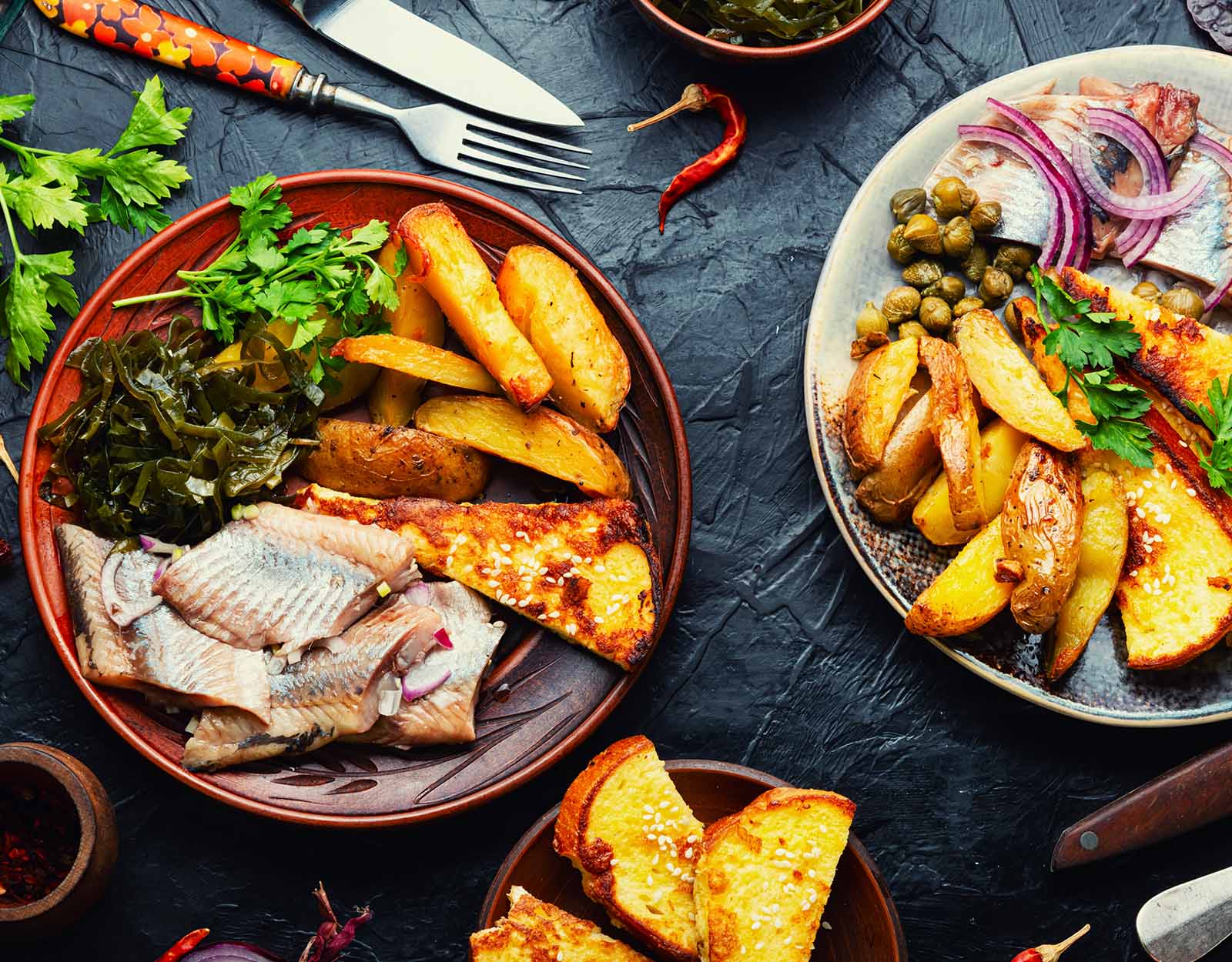
How to choose a fresh fish
When choosing a fresh fish, there are three important things to take note of:
- The fish’s eyes: the clearer the eye, the better. If the eye looks murky or red, that means it’s old and more prone to tasting smelly or fishy (malansa or lasang lupa).
- Color of the fish gills: when the fish is still fresh, the gills are bright red. The paler they look, the older the fish is. But be careful, some fish vendors dunk the fish in blood to stain the gills red to make them look fresh.
- Smell: if it’s hard to gauge based on the aforementioned qualities, then we rely on our noses. If it has a strong fishy smell, then most likely, it’s not fresh.
Live or Frozen: Which is better?
Only certain fish are sold live because their freshness heavily impacts their taste when we cook them. Sometimes, the appearance also plays a big role. Catfish (also known as Hito) is the usual one sold live and because of its snake-like appearance, not many people would buy it if it’s just lying among the selections.
Shrimp or Suahe is another seafood that supermarkets usually sell live because it tastes best when cooked at its freshest. Some selected supermarkets follow the fishing seasons and sometimes sell live Lapu-Lapu (Grouper) which is a favorite among the Chinese for their Steamed Fish recipe.
But take note: frozen fish are good to have around for emergencies, as it has a longer shelf life compared to fresh fish. You can even opt for frozen fish even if you want to prepare imported fish or variants that are off-season.
A Buying Guide to Fish: Tagalog to English Translations of Fish Names
It’s difficult to look for a particular fish sometimes when we go to the supermarket and buy because we know the English name but not its Tagalog counterpart and vice-versa. Also, some try to sell certain fish as a more expensive kind of fish to justify their prices.
So, without further ado, here’s a translation of fish names in both English and Tagalog.
Common fish in Philippine supermarkets
- Tilapia: also known as Pla-Pla to some, families mostly fry and serve with ensaladang kamatis at sibuyas. It has cottony soft meat and has large bones, making it easy to debone. Most families introduce fish to their kids using Tilapia.
- Lapu-Lapu: known as Grouper in English and for its melt-in-the-mouth texture, the Philippines is home to two varieties: the red one and the black one also known as Lapu-Lapu Ulpot. Lapu-Lapu is the usual fish in Chinese restaurants especially when serving their Steamed Fish recipe.
- Talakitok: a species of Trevally or Jackfish. Most Filipino restaurants serve this fish grilled or fried because its meat has a chicken-like texture.
- Maliputo: a sub-species in the Philippines, these may often be sold as Talakitok but the difference lies in their preferred habitats. Maliputo comes from saltwater bodies, usually Taal Lake, which is why its meat has salty and smoky notes.
- Galunggong – Once known as the “poor man’s fish” and known as Mackerel Scad in English, we usually see Galunggong in the form of tinapa—a method of preservation where fishermen smoke the fish in salt. But some supermarkets sell it fresh because of its chunky, chicken-like meat.
- Tawilis: the Philippines’ form of Sardines; supermarket also sells them both smoked and fresh. Usually, families fry these fish until they’re so crispy that when we bite into them, the bones turn into dust.
- Danggit: in other countries, they call it a Spinefoot fish. But in the Philippines, it’s a favorite dried good that people often fry. Most people recommend buying the ones made in Cebu.
- Dilis: also known as anchovy, they often sell it dried and in packs. But some sell it bottled and immersed in olive oil and garlic.
- Pampano: pampano (or Pomfret in English) comes in two different colors: white and black. Black Pampanos have delicate flavors which make them perfect for Asian recipes. White Pampanos have a buttery afternote, which is why some families love grilling them in butter and garlic.
- Maya–Maya: known as the Red Snapper, families love the distinct sweet flavor found in its meat. We usually boil it in Sinigang soup.
- Bangus: in English, we call this Milkfish. While this fish has a delectable milky texture and creamy meat, it’s not a beginner’s fish because of how thin and feathery the bones are. But supermarkets do sell them already deboned or filleted.
- Hito: the slippery catfish is often sold live in supermarkets because of their unappealing, snake-like appearance. But many people love eating hito because of how easy it is to debone and how creamy the meat is when deep-fried.
- Dory / Pangas: the typical cream dory is always a favorite because it’s boneless and soft. It’s a flexible fish that matches various cooking methods and a gateway fish for many kids and parents who don’t like deboning.
- Salmon: the orange-pinkish fish is common fare especially its head and the belly which many enjoy for its soft creamy meat which is rich in Omega-3.
- Sapsap: known as “ponyfish” in English, Filipinos usually enjoy this small, flat, and round fish deep-fried. It also has a subtly sweet meat that shines when cooked as the main viand in paksiw.
- Dalagang Bukid: its unique pink color catches the eye of anyone who buys it in the supermarket as it adds a pop of color in most Filipino fish dishes. Dalagang Bukid tastes similar to a Lapu-Lapu, mild but with soft flesh. It’s also known as the Philippine Goldband Fusilier.
- Bisugo: sold both fresh and dried, Bisugo (Threadfin Bream) is a family favorite because of how versatile it is in meat texture and flavor.
Other common seafood in the supermarket
The Philippines, as an archipelago, is home to many species of seafood. We have different kinds of clams like Halaan (Manila Clam), Batoto (Cowrie Clam), and Tuway (Mud Shell or Hard Shell Clam). Then, there are the different kinds of shrimp such as Suahe (Shrimp) and Sugpo (Prawn) which we either boil or grill in butter. Talaba or Oysters are also common and come in either still in shells or plastic bags.
A Cheat Sheet for Cooking Fish-based recipes for Lent
Although Filipinos love their meat, they have a lot of delicious fish recipes too! But the tricky part is matching the fish to the best method of cooking. Here’s our cheat sheet for cooking fish dishes this Lenten season:

1. Ginataang… Sa Gata
Filipinos love adding coconut milk to everything, whether it’s a dessert or a savory dish. Besides the ready-to-eat tuna version of Bicol Express, Filipinos sometimes stew Pechay Baguio or other vegetables with fish to emphasize on the creamy texture of the fish while masking the fishy taste.
Recommended fish: Tilapia

2. Sinigang
Filipinos love drinking sour Sinigang soup to cleanse their palate, eat more vegetables, and clear their throats. As for the souring agent, there are different kinds like sampalok, kamias, batuan (native to Ilo-Ilo), tomatoes, watermelon, and even strawberry — which is common in Baguio. Some Sinigang fish dishes even mix miso in it to make the soup creamy.
Recommended fish/es: Maya-Maya, Bangus, Salmon
Recommended seafood: Suahe
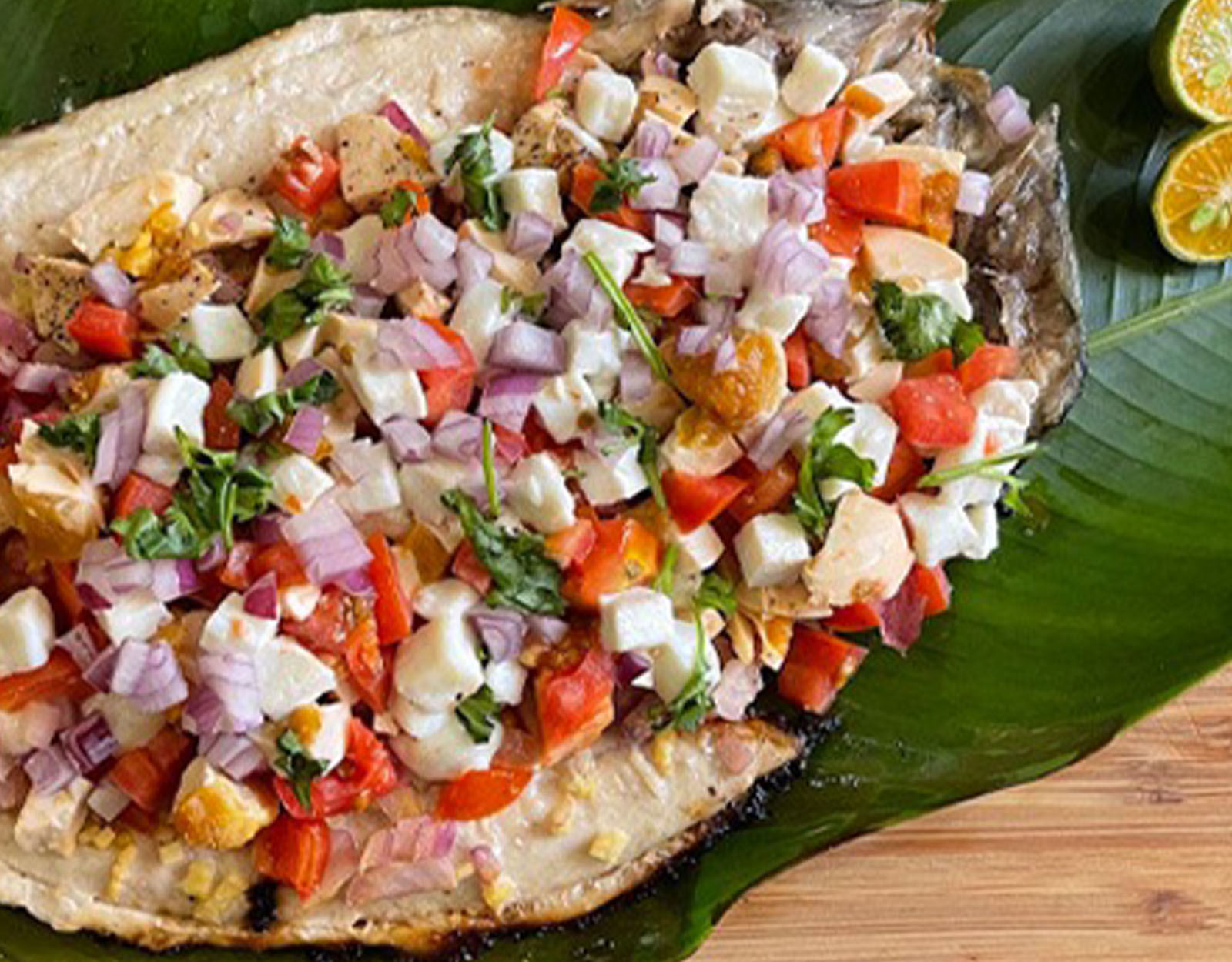
3. Ihaw (Grill)
The traditional Ihaw dish often involves grilling a fish on top of coal while wrapping it in banana leaves to trap the juices in. It’s a common cooking method, especially when we’re at the beach and there’s nothing but a firepit to cook with. What some Filipinos do when they grill a fish is that they clean the fish’s stomach using salt and water. Then, they stuff the stomach with spices to remove the fishy taste.
In Ilo-Ilo, they often cook Bangus (milkfish) in this way and call it Sugba, serving it with steamed or grilled vegetables like okra and eggplant.
Recommended fish/es: Talakitok, Maliputo, Pampano, Hito, Bangus, Galunggong
Recommended seafood: Talaba (Oyster)
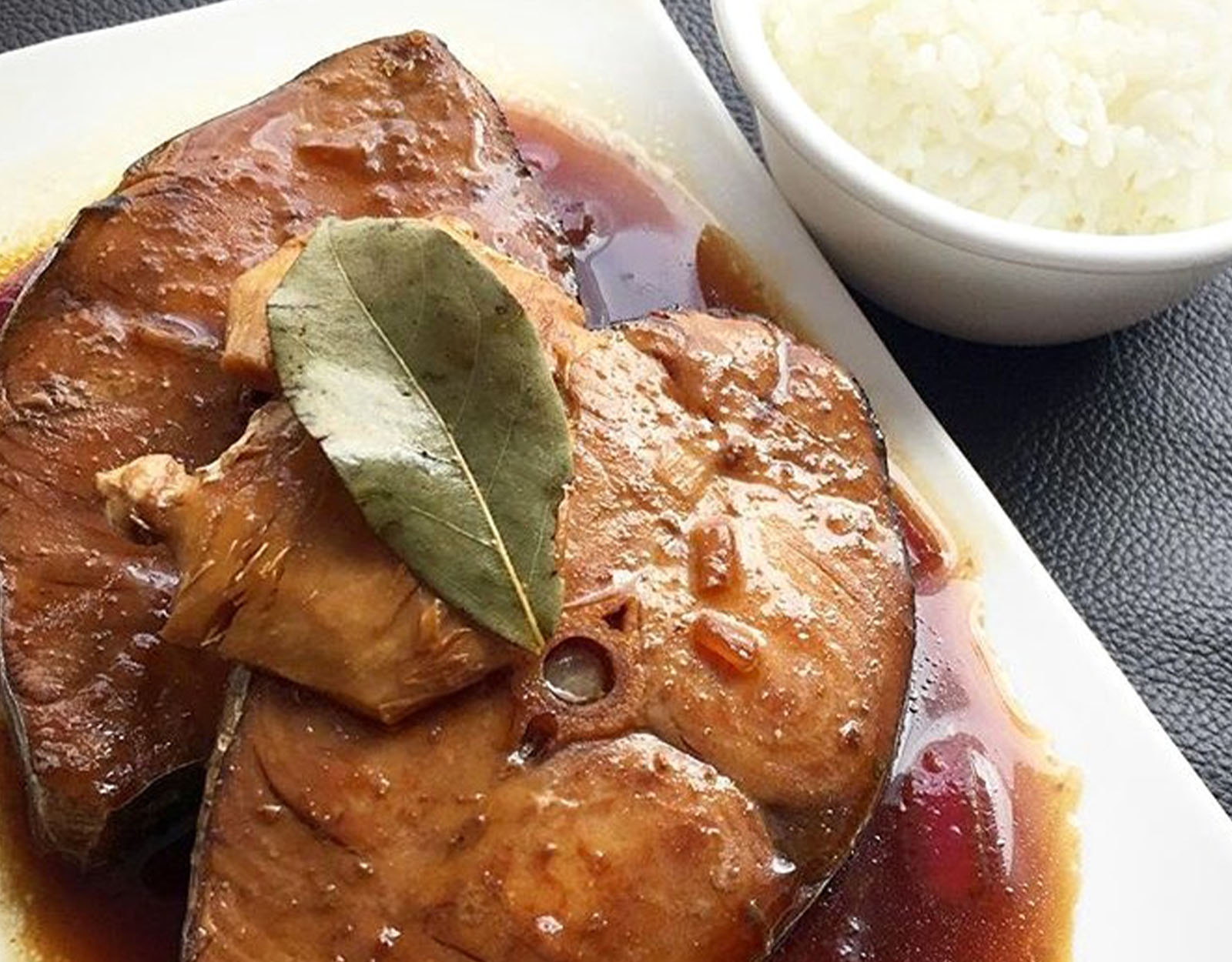
4. Adobo
The savory salty-sweet-sour sauce shines when paired with meaty fish, simulating the texture of chicken or pork. Although adobo is usually a mix of soy sauce, vinegar, peppercorns, garlic, and onion, the flavor profile changes depending on the region. Humba, the Visayan approach, has salted black beans and muscovado sugar. Then, there’s adobo sa gata which is a common preparation for Hito (catfish).
Recommended fish/es: Tuna, Hito, Torcillo, Bangus
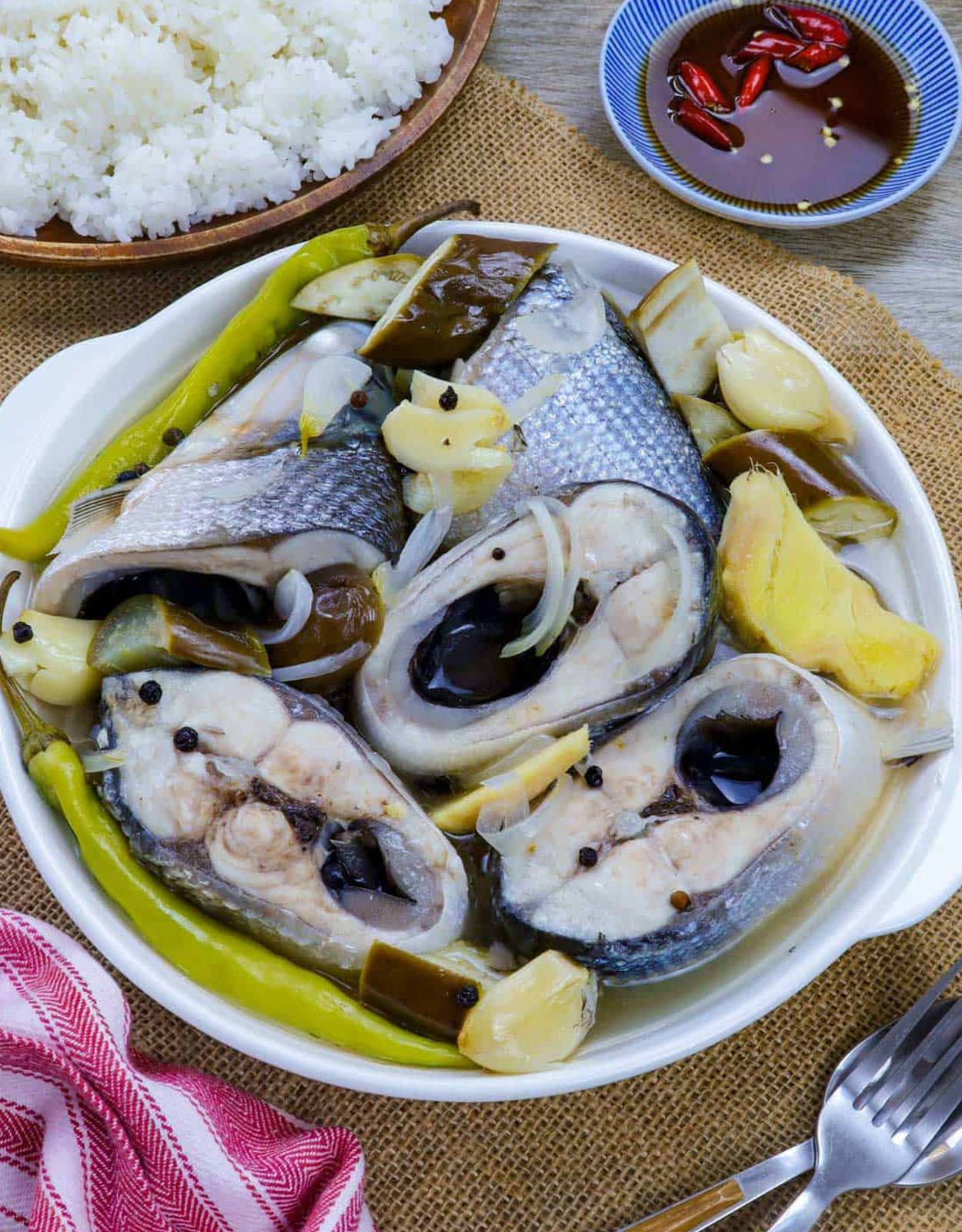
5. Paksiw
Paksiw is a dish that cooks meat or fish in any souring agent, usually vinegar. But some provinces like Ilo-Ilo use Batuan to serve as the main ingredient for the sauce. Paksiw often stews vegetables like okra, eggplant, onions, siling haba (long green chili), and ginger with the fish.
Recommended fish/es: Bisugo, Dalagang Bukid, Tilapia, Pampano, Sapsap, Galunggong
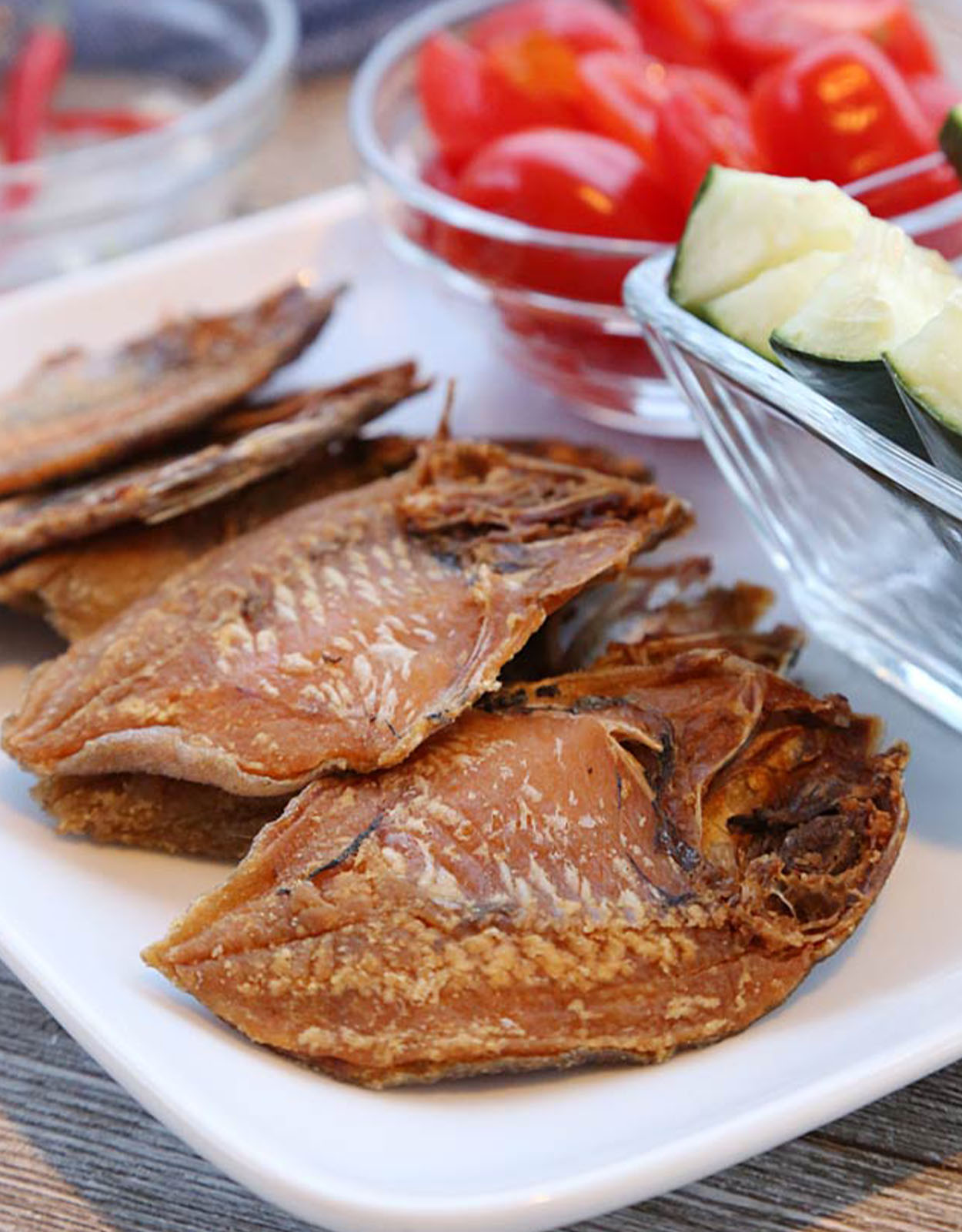
6. Fried and Glazed
Fried and glazed is more for dried fish when they’re already extremely salty. For this fish dish, melt some sugar or muscovado in a pan while mixing them with soy sauce until it thickens. Add a bit of garlic powder and dried siling labuyo flakes to add some spice before tossing the already-fried fish into it. The sweet glaze will reduce the saltiness and goes well with vegetables or rice.
Recommended fish/es: Dilis, Danggit, Bisugo (most dried fish)
Fish dishes don’t need to be boring this Lenten season!
Because Filipinos love their beef and pork, it can be quite a suffering to eat fish for the next 40 days. We think it’s “too light” or boring for our daily needs. But fish can be exciting so long as you switch up the dishes. As a country surrounded by water, everyone has their way of cooking a fish. All we need to know is how to maximize each fish’s taste and texture to make a hearty meal for the family!
More recipes to cook for this Lenten season?
Easy Valentine’s Day Recipes to Sweep Your Partner Off Their Feet
Kid-Friendly Pinoy Fish Recipes Beyond Escabeche
Celebrate Life’s Exciting Moments With This Special Seafood Noodle Recipe
